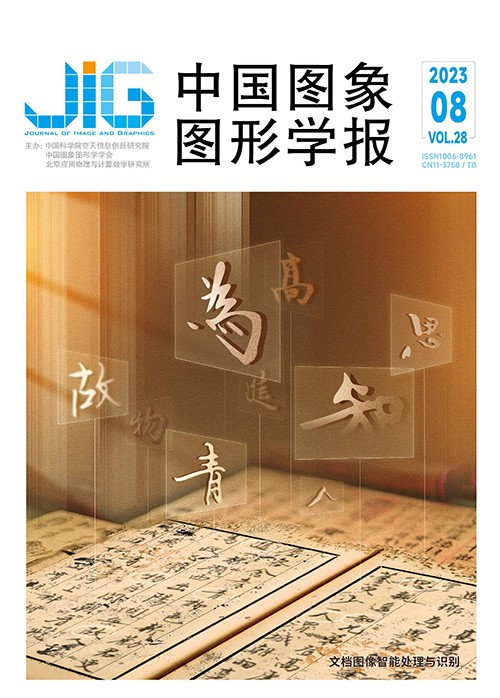
深度学习与影像自动化评估的肾肿瘤剜除术难度预分析
刘云鹏1, 吴铁林2, 蔡文立3, 王仁芳4, 孙德超4, 干开丰2, 李瑾4, 金冉4, 邱虹4, 徐惠霞4(1.宁波工程学院国交学院, 宁波 315000;2.宁波大学附属李惠利医院, 宁波 315000;3.哈佛医学院放射学图像实验室, 波士顿 02114, 美国;4.浙江万里学院, 宁波 315000) 摘 要
目的 早期肾癌可以通过肾肿瘤剜除术进行有效治疗,为了降低手术难度和减少手术并发症,需要对手术的难度进行合理有效的评估。本文将深度学习、医学影像组学和图像分析技术进行结合,提出一种基于CT(computed tomography)影像的肾肿瘤剜除术难度自动评估方法。方法 首先建立一个级联的端到端分割模型对肾脏、肾肿瘤和腹壁同时进行分割,同时融入子像素卷积与注意力机制,保证了小体积肿瘤分割的精确性;然后使用影像组学特征对误判的肾肿瘤进行去除;最后依据分割结果,采用国际标准的梅奥肾周粘连概率(Mayo adhesive probability,MAP)评分和R.E.N.A.L评分对肾脏和肾肿瘤进行自动化的评估计算,并根据计算结果得出肾肿瘤剜除术难度。结果 将实验的自动化评估结果与三甲医院泌尿科的3位医疗专家的结果进行对比,从预测的平均结果来看,超过两个专家,与最好的专家相差仅0.1%。平均预测时间,单个肿瘤约为244 ms,标准差只有8 ms,专家评估时间约为26 s,标准差在3 s左右,自动评估速度是人工的108倍左右。结论 自动化评估结果整体上与专家评估水平基本一致,同时评估速度更加快速稳定,可以有效替代专家进行自动化评估,为术前准确诊断、手术方案个体化规划和手术入路选择提供准确可靠的决策支持,给手术难度诊断评估提供智能化的医疗解决方案。
关键词
Pre analysis of difficulty in renal tumor enucleation surgery based on deep learning and image automation evaluation
Liu Yunpeng1, Wu Tielin2, Cai Wenli3, Wang Renfang4, Sun Dechao4, Gan Kaifeng2, Li Jin4, Jin Ran4, Qiu Hong4, Xu Huixia4(1.International Exchange College, Ningbo University of Technology, Ningbo 315100, China;2.Li Huili Hospital Affiliated to Ningbo University, Ningbo 315000, China;3.Radiology Imaging Laboratory, Harvard Medical School, Boston 02114, USA;4.Zhejiang Wanli University, Ningbo 315000, China) Abstract
Objective Early renal cancer can be identified and treated effectively via enucleation of renal tumor. To optimize surgery and its surgical complications,it is necessary to evaluate the surgical feasibility efficiently and effectively. To quantify the difficulty index of surgical contexts,Mayo adhesive probability(MAP)score and R. E. N. A. L score can be involved in for its applications. computed tomography(CT)images-based manual analysis is roughly estimated in terms of these two scoring standards-related corresponding difficulty score. To optimize the accuracy and reliability of evaluation, this sort of qualitative manual evaluation method is time-consuming and labor-intensive. Thanks to deep learning technique based medical radiomics and image analysis,we develop an automatic evaluation method of CT images-based surgical optimization in relevance to enucleation of renal tumors. Method First,a three-layer cascade end-to-end segmentation model is illustrated to segment the kidney,renal tumor and abdominal wall simutanesoualy. Each layer is linked with an extended U-Net for segmentation. The abdominal wall segmentation is at the top of them,followed by the kidney segmentation,and the renal tumor is at the bottom. This stratification is derived of a learning process of spatial constraints. For the extended U-Net,the dense connection is reflected in the convolution block of the coding layer or coding and decoding layer-between same layer,as well as upper and lower-between layers. This kind of dense connection at the three levels can be used to obtain more semantic connections and transmit more information in the training,and overall gradient flow can be effectively enhanced,and the global optimal solution can be sorted out smoothly. To alleviate the loss of redundant texture detail in the up-sampling process,the sub-pixel convolution mode is used further. This method proposed can generate higher resolution images through the pixel order-related intervention of multiple low resolution feature images. At the same time,image mode-medical attention mechanism is used to preserve the accuracy of small volume tumor segmentation. Then,the misjudged renal tumors are removed in terms of radiomics features,which are high-dimensional non-invasive image biomarkers and beneficial to mine,quantify and analyze the deep-seated features of naked eye-related unrecognized malignant tumors. In this study,seven groups of radiomics features are calculated,including such features in relevance to gray level coocurrence matrix(GLCM),square-statistical contexts,gradient,moment,run length(RL),boundary,and wavelet features. Finally,segmentation analysis-based international standard MAP score and R. E. N. A. L score are used to evaluate and calculate the kidney and renal tumor automatically,and the surgical dilemma of enucleation of renal tumor is located further. Result The synchronized results of segmentation of kidney,renal tumor and abdominal wall are evaluated. The performance indicators like dice coefficient(DC),positive predicted value(PPV)and sensitivity are illustrated. The sensitivity,PPV and Dice are 0. 1,0. 08 and 0. 09 higher than the worst U-Net++,0. 04,0. 04 and 0. 05 higher than the better BlendMask. The highest values of sensitivity,PPV and Dice can be reached to 0. 97,0. 98 and 0. 98. To remove falsepositive tumor areas effectively,the binary classification model is adopted as well. The random forest(RF)machine learning method is used,because the average performance of RF in various test samples can be optimal to a certain extent. The five-fold cross validation accuracy of RF is 0. 95(±0. 03),and the area under curve(AUC)value is 0. 99,which is much higher than other related classification methods. For the MAP and R. E. N. A. L scoring experiments,the results of all 5 times can keep consistent with the evaluation results of two experts-least for P,L and R values;For N and E values,four of the five results are in consistency in related to the evaluation results of least two experts. It can be seen that the scoring ability of automatic individual items has been very close to the focused experts. The final operation difficulty evaluation results are compared with the three medical experts in the urology department of class A tertiary hospital. The average resultspredictable automation method can demonstrate its potential consistency in relevance to the expert evaluation level as a whole. Conclusion We facilitate an accurate and reliable decision for accurate preoperative diagnosis,individualized planning of surgical scheme and surgical approach selection. Furthermore,our method proposed can be integrated into the medical-relevant image cloud platform to provide intelligent and optimal medical solutions.
Keywords
|



 中国图象图形学报 │ 京ICP备05080539号-4 │ 本系统由
中国图象图形学报 │ 京ICP备05080539号-4 │ 本系统由